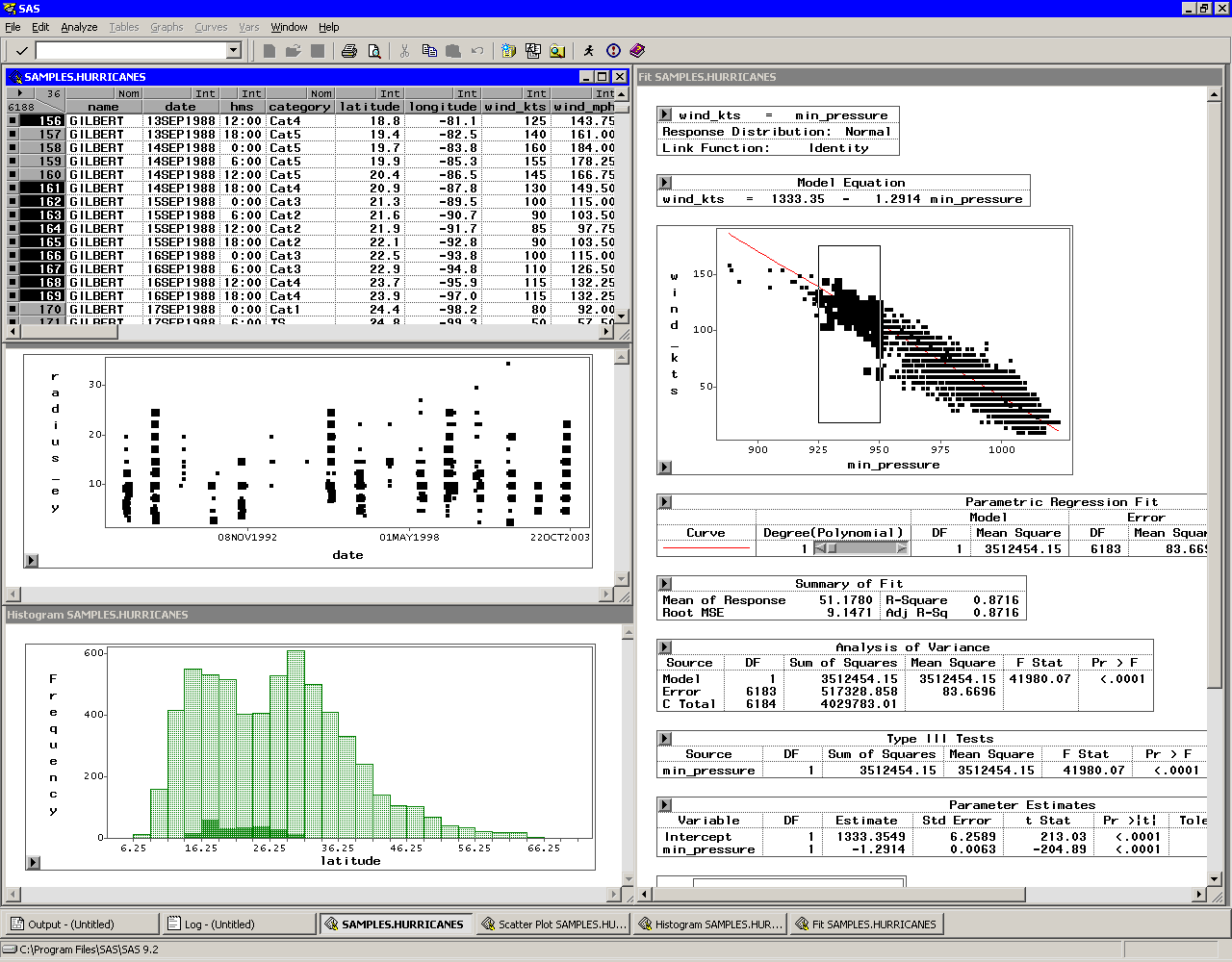

- #Sas tools for data analysis software
- #Sas tools for data analysis series
- #Sas tools for data analysis free
A free university edition has been introduced for students to learn and use SAS.
SAS is proprietary software, and companies need to pay to use it. SAS is a statistical software suite widely used for BI (Business Intelligence), data management, and predictive analysis.

To know more about R you can visit here: 3.
 Twitter - For data visualization and semantic clustering. Google - For advertising effectiveness and economic forecasting. Facebook - For behavior analysis related to status updates and profile pictures. R has a huge community of developers for support. R is excellent when it comes to data visualization and analysis with packages such as ggplot, lattice, ggvis, etc. Data manipulation in R is easy with packages such as plyr, dplyr, and tidy. R is a winner when it comes to EDA(By definition - In statistics, exploratory data analysis(EDA) is an approach to analyzing data sets to summarize their main characteristics, often with visual methods). However, it is a great language when it comes to syntax and consistency. R has a steep learning curve and needs some amount of working knowledge of coding. R is a free, open-source programming language and has a lot of enhancements to it in the form of user written packages. It is majorly used by statisticians for statistical analysis, Big Data and machine learning. R is the leading programming language for statistical modeling, visualization, and data analysis. Top Companies that use Python for data analysis are Spotify, Netflix, NASA, Google and CERN and many more 2. Python has an extensive developer community for support and is the most widely used language. Matplotlib, seaborn, and vispy are packages for data visualization and graphical analysis. Other libraries, such as Scipy, Scikit-learn, StatsModels, are used for statistical modeling, mathematical algorithms, machine learning, and data mining. To know more about Pandas, checkout Python Pandas Tutorials. Pandas is a powerful tool for data visualizing, data masking, merging, indexing and grouping data, data cleaning, and many more.
Twitter - For data visualization and semantic clustering. Google - For advertising effectiveness and economic forecasting. Facebook - For behavior analysis related to status updates and profile pictures. R has a huge community of developers for support. R is excellent when it comes to data visualization and analysis with packages such as ggplot, lattice, ggvis, etc. Data manipulation in R is easy with packages such as plyr, dplyr, and tidy. R is a winner when it comes to EDA(By definition - In statistics, exploratory data analysis(EDA) is an approach to analyzing data sets to summarize their main characteristics, often with visual methods). However, it is a great language when it comes to syntax and consistency. R has a steep learning curve and needs some amount of working knowledge of coding. R is a free, open-source programming language and has a lot of enhancements to it in the form of user written packages. It is majorly used by statisticians for statistical analysis, Big Data and machine learning. R is the leading programming language for statistical modeling, visualization, and data analysis. Top Companies that use Python for data analysis are Spotify, Netflix, NASA, Google and CERN and many more 2. Python has an extensive developer community for support and is the most widely used language. Matplotlib, seaborn, and vispy are packages for data visualization and graphical analysis. Other libraries, such as Scipy, Scikit-learn, StatsModels, are used for statistical modeling, mathematical algorithms, machine learning, and data mining. To know more about Pandas, checkout Python Pandas Tutorials. Pandas is a powerful tool for data visualizing, data masking, merging, indexing and grouping data, data cleaning, and many more. (By definition - Time-series analysis is a statistical technique that analyses time series data, i.e., data collected at a certain interval of time) Pandas support multiple file-formats for example, you can import data from Excel spreadsheets to processing sets for time-series analysis. With Pandas, you can just do anything! You can perform advanced data manipulations and numeric analysis using data frames.
Python’s data analysis library Pandas was built over NumPy, which is one of the earliest libraries in Python for data science. Python is free, open-source software, and it is easy to learn. It is a powerful Data Analysis tool and has a great set of friendly libraries for any aspect of scientific computing. Python is the fastest-growing programming languages today. Python was initially designed as an Object-Oriented Programming language for software and web development and later enhanced for data science. Common queries that could run in your mind are: how many users use tools, how easy it is to learn, how it is placed in the market, and if you are a business owner, you may be concerned about the cost of ownership of such tools. There are many tools to assist this Data-Driven Decision-making process, and choosing the right tool is a challenge for data scientists or data analysts. This raw data needs to be analyzed for business decision making, optimizing business performances, studying customer trends, and delivering better products and services. Within a year, there would be 44 trillion gigabytes of data accumulated in the world. That is where Big Data and Data Analytics tools and techniques help unfold the world of hidden, yet targeted information.Ī 2022 prediction says - each user would create 1.7 megabytes of new data every second. It implies that smart digital assistants track your search and load you with additional information that might help you make your dream come true. What do you see? Advertisements of your dream destination pop up in every corner of the screen. You search more about the place and enjoy reading information. Imagine you wake up with your dream holiday destination and jump on to explore more about it online.







 0 kommentar(er)
0 kommentar(er)
